Basic Definition of Bathroom
A bathroom is an independent room used for bathing, washing, and other hygiene activities. It is a space in a home or any residential building with a bathtub or shower, a water closet, a wash basin, storage, etc. Bathrooms can be designed as a separate room or they can be attached to a bedroom. It should be designed in a way that is functional, accessible, safe, and hygienic. In India, bathrooms are generally referred to as “toilets.” [3][7]
An image is shown below with all the standard dimensions involved in the bathroom design. The specific bathroom standards can vary from country to country and may be regulated by a government body or the industry involved in it.
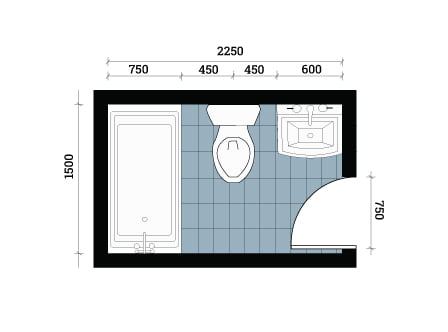
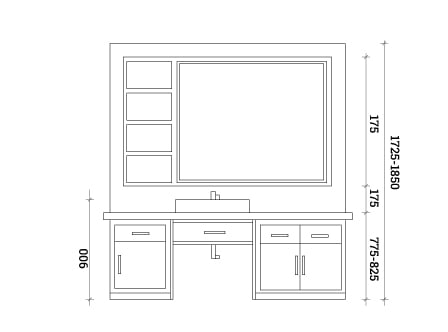
Suitable location of the Bathroom
The bathroom should be oriented toward the north and, if possible, have natural ventilation and lighting (or provide effective mechanical ventilation inside). The bathroom is normally planned next to the bedroom, although it is also good to design it wherever it is needed. [3]
The Toilet rooms shall not open directly into a room used for the preparation of food. [10]
Location of Bathroom as per Vaastu
The toilet and bathroom need to be located in the north direction or on the northwest side of the house. The bathing area should not be in the south or southeast direction because it is said to have negative impacts on the health of the people living in that house. [8]
The bathroom should not be built near the puja room or prayer area. [6]
Types of Bathroom based on the layout
A bathroom can have different layouts depending on the arrangement of fixtures and the position of openings.
The dimensions of a basic toilet with a WC in it are 1200 x 900 mm.
The standard dimensions of a toilet with a WC and washbasin are 1500 x 2100 mm.
The standard dimensions of a full bathroom is 1800 x 2400 mm. [10]
A jack-and-jill bathroom layout is a kind of layout that is designed between two bedrooms. It can be accessed by both bedroom users simultaneously. This type of design needs to ensure that the privacy lock is installed on both doors. Typically, this type of layout has a shower area, a WC, and a wash basin. [9]
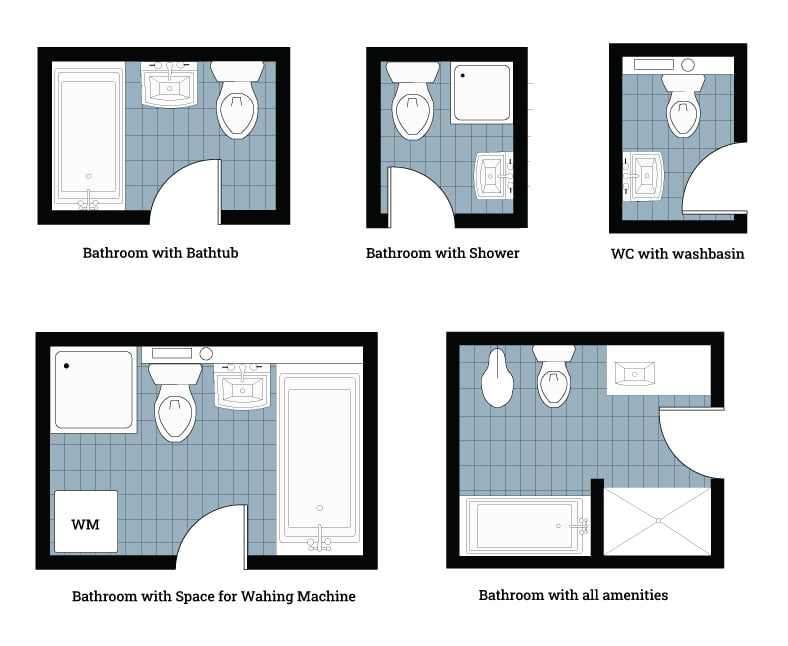
Design Parameters for the Toilet
The standard dimensions of the bathroom should be 1800 x 2400mm with a shower area, water closet, wash basin, and some storage area.
Activities generally people prefer in the bathroom
Activities commonly performed in the bathroom include washing hands, faces, and other hygiene activities, as well as hand laundering and infant care. Often, it is also used as a dressing room. [2] The major focus should be on convenience, privacy, and the safety of the user. The ease of work activities should be followed for good design. Going with this flow, most used, least used, and used once or twice. The most used thing in the bathroom is the wash basin, so it should be placed first, then the least used is the water closet, which should be placed next to it, and last is the shower area, which is used once or twice a day. This will create a great workflow and good design.
Different areas in the bathroom
As I have talked about above, there should be a segregation of fixtures so that we can have a good design, better workflow, and easy maintenance. Different zones and areas mean:
- Dry Area
- semi-wet area
- Wet Area
Dry area
The dry area is the area where we install the wash basin. This area is directly accessed by the door of the washroom, which has a 15–25 mm drop so that water doesn’t flow outside the bathroom and disturb other spaces.
Add an electrical outlet for the hair dryer, and shave in a dry area. [5]
Semi-Wet Area
A water closet should be installed in a semi-wet area with non-slippery tile.
The height of the seat cover from the floor should be 400 to 450 mm, considering the average Indian height.
Gypsum should not be used on walls or ceilings because it deteriorates quickly. Use water- and humidity-resistant fiber cement boards. [5]
Wet Area
In wet area we install shower and bathtub which is used for bathing. Least used in bathroom as compared to other area. The wet area should have a drop of 8 to 12 mm so that water doesn’t flow back to the other areas of the bathroom.
For proper drainage, the wet area should have a slope of at least 1:50.
Try to provide direct natural light to the wet area so that the surface remains dry and odor-free. [5]
I would recommend providing two drops for the bathroom: one of 15–25 mm at the entry of the bathroom and another of 8–12 mm near the shower area. Doing this restricts the flow of water to the inside of the bathroom only. The water will not flow back to any other room or space.
If you are going with only one drop at the entrance, then it may be risky for the user. Because doing so will not have a dry area which can make the bathroom slippery and also leads to unnecessary dirt inside the bathroom.
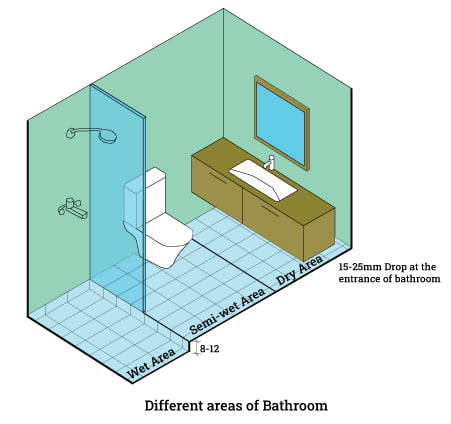
Door and windows arrangement
A good arrangement of doors and windows provides good circulation and safety inside the bathroom.
Door: The bathroom door should swing out or be a two-way opening type so that the person inside does not fall against the door and block it. [10]
The standard width of the bathroom door is 750 mm. In the case of children, it can vary. [3]
The swing of the door should not be towards the wash basin; there might be a chance that someone is standing there and the swing will hurt him.
The door opening should not be provided directly facing the water closet, as it is not suitable for the user.
Window: Cleaning or opening the window above the bath can be difficult without standing on the bathtub (a potential cause of an accident) [4].
Full-size windows in the bathroom are a good choice because they provide more natural light and a good view of the surrounding area.
A window should not be placed directly toward the mirror as it can create glare and cause accidents.
If there is no option for the window, then we can also prefer a skylight for the bathroom.
Plumbing layout challenges
Designing a good layout is the most important part of a bathroom; sanitation maintains a healthy and safe environment in the bathroom.
Plumbing can be done in six ways inside the bathroom:
Through the flooring (if it is located on the ground floor).
Soil pipes of 100 mm, drain pipes of 75 mm, and 25–30 mm of water (hot or cold) pipe are generally fixed inside the bathroom. The layout is prepared for the installation of these pipes without disturbing each other on the floor. Then the exit route of these pipes is taken out through the floor to sewage pipelines. [10]
Through the external wall
All the pipe work is directly laid on the wall (by breaking the wall and placing the pipes). Experienced labor is required for this job because it requires the best waterproofing and good pipe arrangements. The thickness of the external wall should be 230mm or greater.
Through the false ceiling
Pipework can be done on the floor or in the wall, and the exit route of the pipe is followed from the false ceiling. A clear width minimum of 450 mm is required for the false ceiling.
Through a sunken slab or inverted beam
These methods are mostly employed in several homes and other projects. It is one of the best plumbing techniques for the bathroom. Similar to previous instances, the piping is built out so that the escape path is followed by a sunken slab or an inverted beam to the shaft or exterior wall. For the pipework, a clear width of 150–200 mm is needed.
Some people criticize this method because it can cause problems with waterproofing, seepage, disturbing neighbors, and removing the entire slab for the user. Some users don’t prefer it.
Through a ledge wall
The ledge wall is shorter and is provided at the back of the WC (water closet). All the pipework of the WC is passed through this wall to the shaft or sunken slab, from where it exits the house and connects to the sewage lines.
The ledge wall not only helps in the installation of the WC, but this wall also creates options for storage and other kinds of useful things. This wall can be used in many ways as per the user’s needs.

Through Shaft
The most convenient method for the exit of pipework, providing ventilation and light inside the bathroom. The shaft houses all of the plumbing pipes in the bathroom.
The circulation zone and activity zone should have clear width of minimum 600 to 750 mm so that it doesn’t disturb each other. [1]
For more standard dimensions of bathroom fixtures click here (You can also download these CAD Blocks, for free):-
To read about, different designer tiles for the bathroom click here:-
Tips for making small bathrooms feel bigger, click here to read:-
To read more about circulation space and activity area clearance, I would prefer the Metric Handbook (6th Edition) and Timesavers for interior design.
To read about the safety, sanitary, and disposal information, I would prefer NBC India 2016 (Part 1)
Detailed standards for the design of toilets for disabled people will be covered in the architecture detail segment in the coming days.
Ergonomics/ Standard dimensions related to bathroom
The ergonomics of the bathroom can be fulfilled by taking care of the facilities and comfort of the users. Below are some standard bathroom dimensions for easy workflow and standard arrangements. The bathroom is a private space, and it should be designed in such a way that it meets all of the user’s hygiene needs while also providing a safe and clean environment. (Source: Neufert, Timesavers, Metric Handbook, etc.)
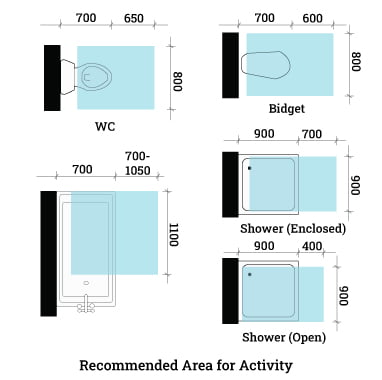
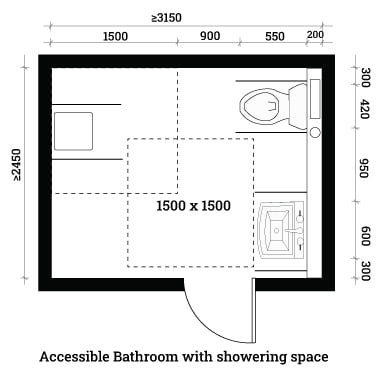
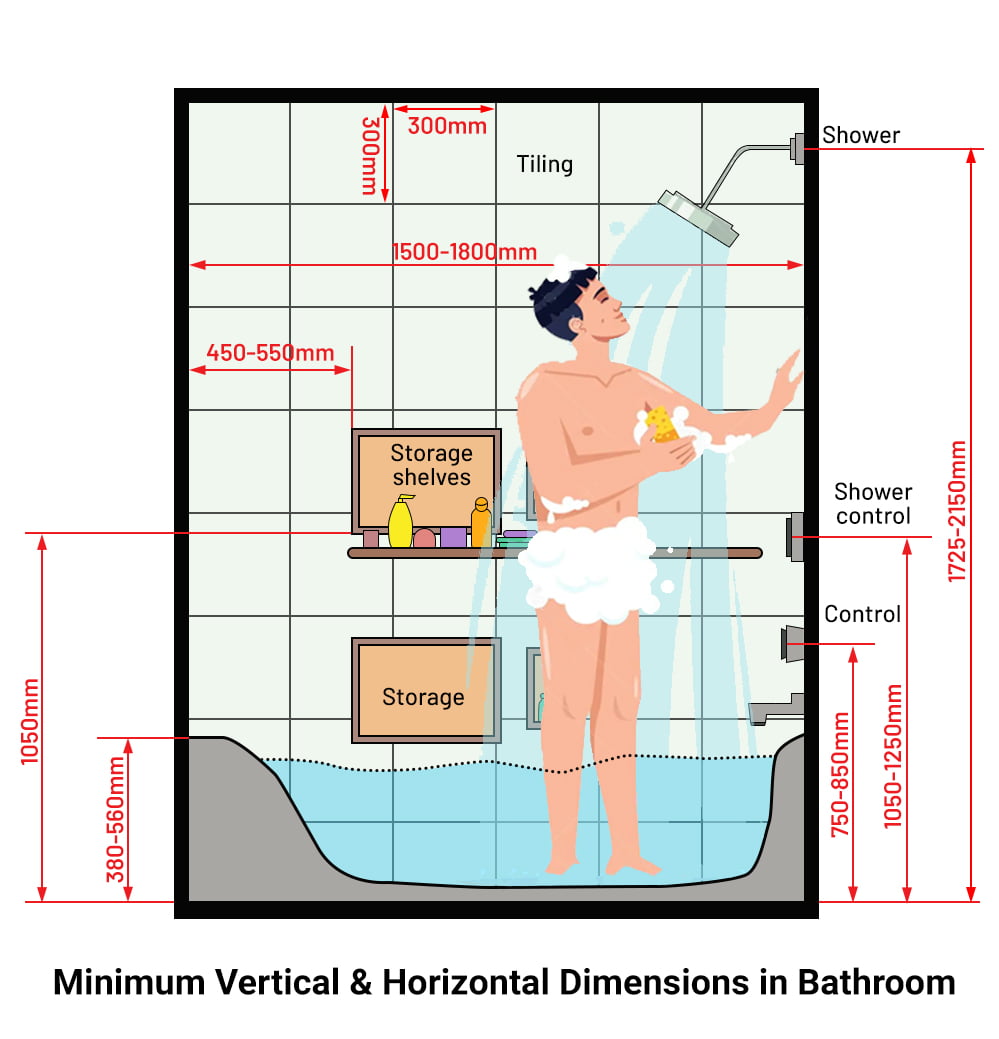
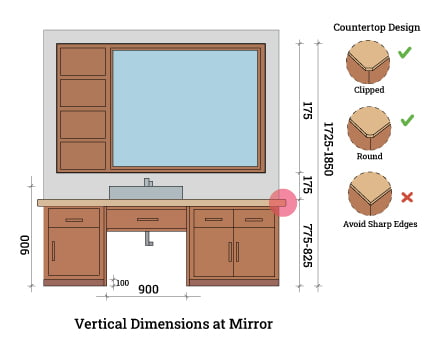

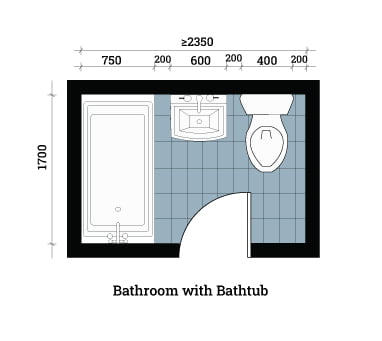
Avoid mistakes while designing the Bathroom/Toilet
Selection of material
The selection of good material for the bathroom is very important because it is a matter of safety and risk. You should use water-resistant materials and slip-resistant materials inside the bathroom. Use durable materials for the floor and walls to withstand moisture and heavy use.
Position of the door
Placing a door in the right place gives a sense of privacy and safety inside the bathroom. The preferred swing of the door is outward, which gives extra circulation space and safety.
Inadequate connection of spaces
The workflow inside the bathroom should be smooth; it should have a good activity area and circulation space. These two factors contribute to a good workflow connection. A dry, semi-wet, and wet area makes for good workflow and connections between the spaces.
Installing wrong-size appliances and cabinets
The dimensions of bathroom fixtures should be on standards so that they are user-friendly. Otherwise, it will impair the health of the user and make him uncomfortable using it. Selecting the fixtures as per the dimensions of bathroom also makes the space aesthetically appealing and serves best functions.
Neglecting the light and the ventilation
The bathroom should have adequate lighting, which makes it easy to use, removes odors, and also makes it safe. A well-ventilated bathroom prevents mold growth and keeps the air fresh.
A Question for the Readers
Comment your answers below…
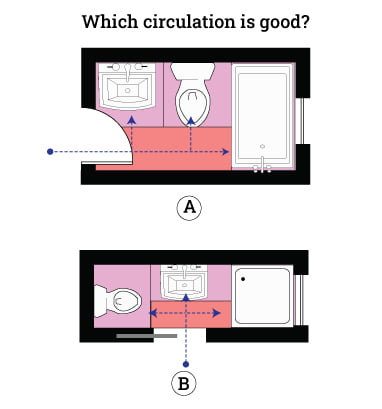



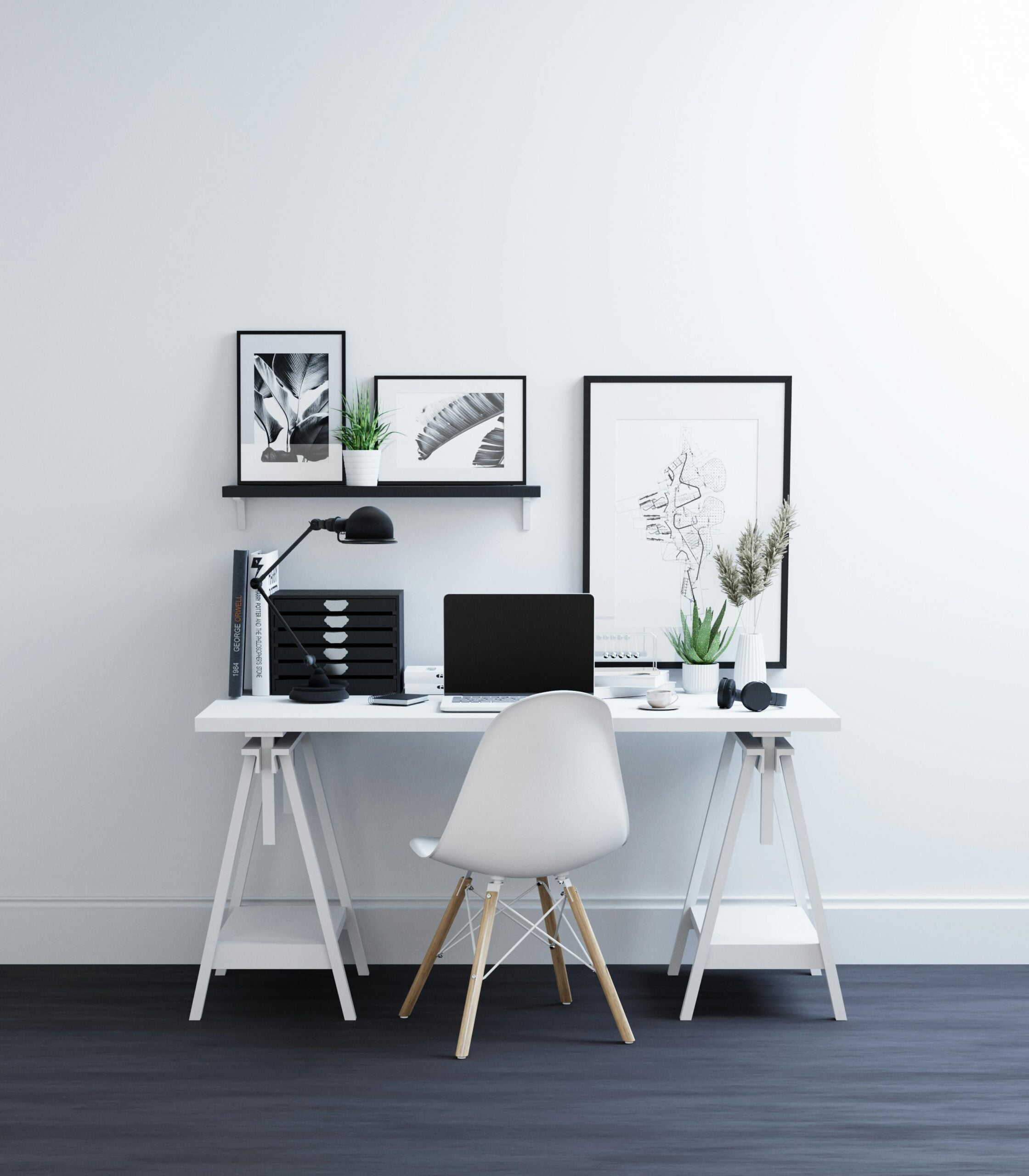
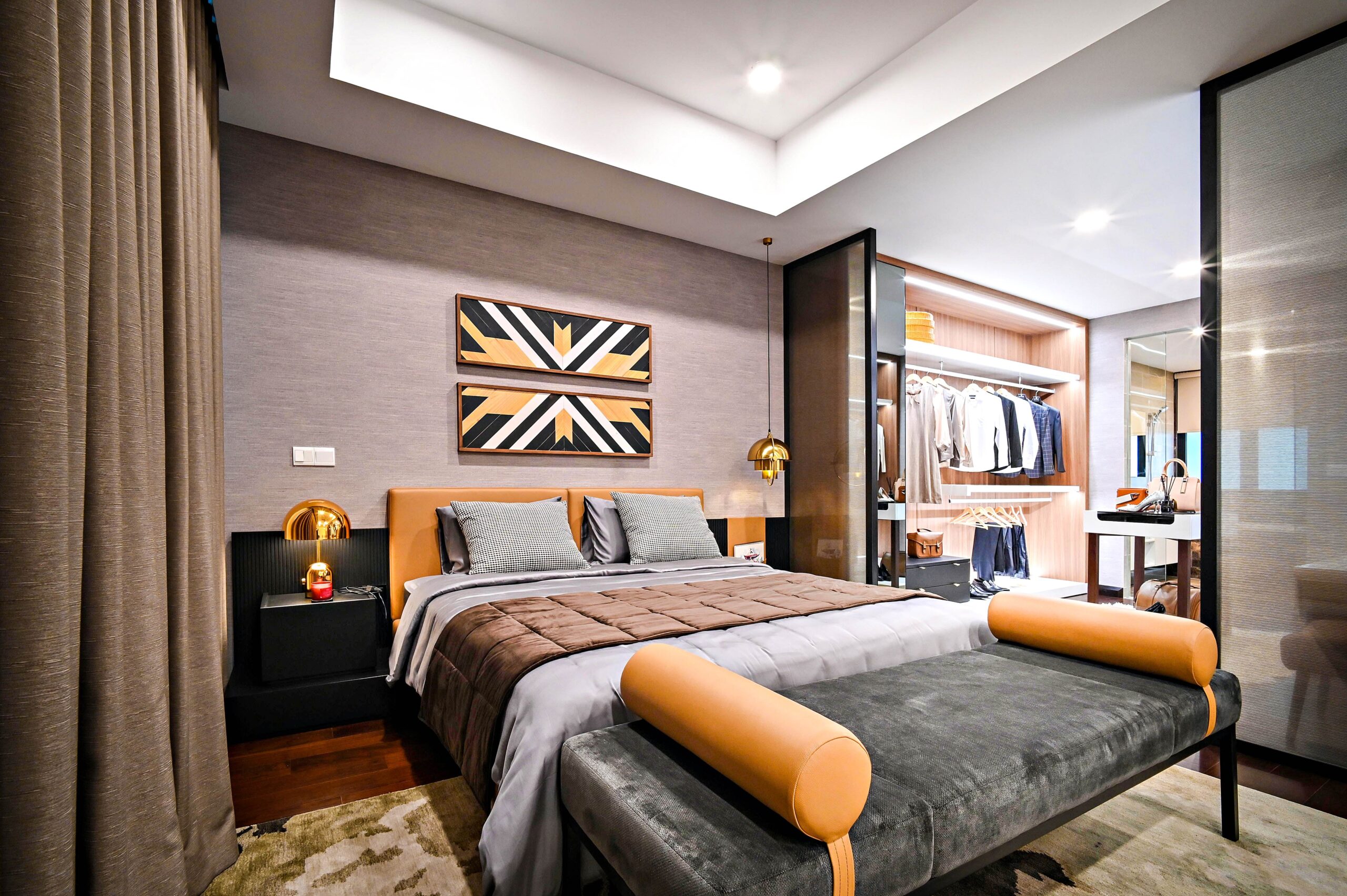


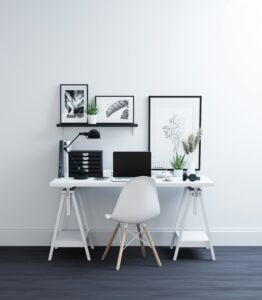
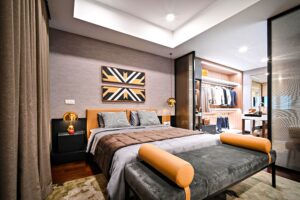
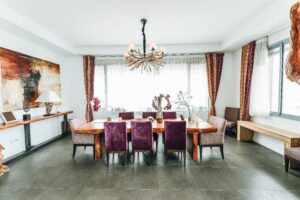
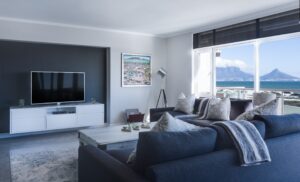

6 Responses
Well written article. Thank you .
Thank you for your kind words! I’m glad you enjoyed the article.
Hi, can you create plan for apartment?
Yes, we can. You can contact us through our social media platform. Click here: https://www.linkedin.com/in/layak-architect-com/
website with full of info and to understand the aspects of dimensions , designs, real work and others .
college students can learn and understand how actual things are. without any guide , helping and knowledgeable data . great work .
Thank you for your kind words! I’m glad you find the website informative and helpful for students to understand real-world dimensions, designs, and other aspects of architecture. It’s wonderful to know that the content is valuable and easy to learn from. Feel free to explore more, and don’t hesitate to reach out if you have any questions!